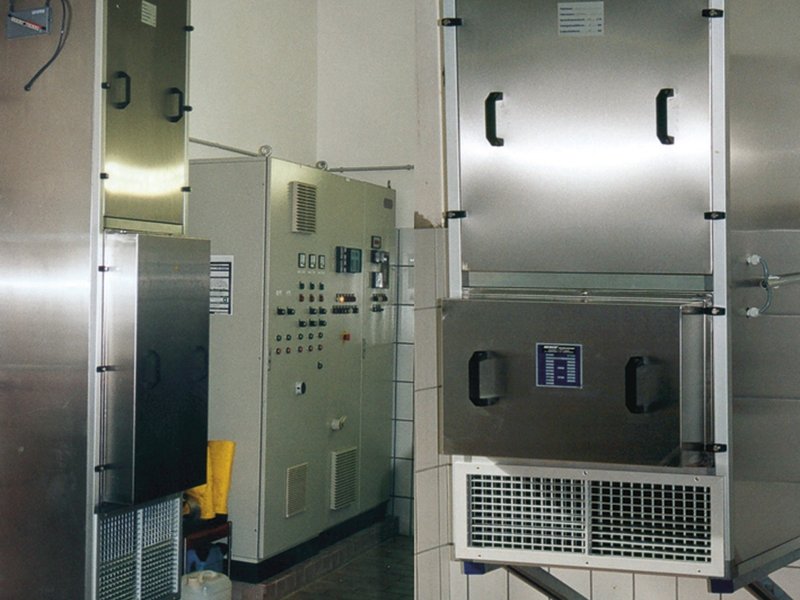The production of active oxygen is a natural process that sterilizes and deodorizes the atmosphere.
Fresh and clean air after a thunderstorm is well-known - this is when the atmosphere is cleaned by means of physical-chemical processes, e.g., initiated by lightning.
In the ionization unit, a strong electrostatic field is produced.
In the air passing between two electrodes, chemical reactions are initiated. The resulting effect is that on one side the electron in the atom moves to a track with a higher energy potential, and on the other side a real oxygen radical is generated at the same time. This means that the activation of oxygen and ionization occur simultaneously. Activated oxygen is then a strong oxidizing agent. In comparison to oxidation by neutral oxygen, oxidation by active oxygen yields a number of benefits. The reactions are started immediately and even strong pollutants are oxidized instantaneously. Odorous substances are oxidized to water, carbon, oxides, and other harmless compounds. Polluting substances are degraded in the same way.
-
IonActOx system (active oxygen treatment)
- sa system suitable for the treatment of air in enclosed spaces
-
IonActOx-IB system with a by-pass
- a system able to process high air volumes
The ionization process is mainly used to eliminate foul odours inside buildings, such as drying plants, rooms with sludge tanks, office premises, wastewater treatment plants, pumping stations, flotation equipment in dairies, etc. As ionization mainly depends on oxygen activation, the application of this technology is very flexible. If ionization units are installed in rooms, polluted air is treated directly. The ionization unit activates oxygen in the air, and the room polluted by odorous substances serves for the execution of the final reaction. Therefore, air extraction from the room can be limited to the minimum or even eliminated altogether (in some applications). This results in low operating costs, especially for heating (or cooling in a hot climate). Intermittent operation of the unit is possible. If the ionization unit cannot be installed in a room, ambient (fresh) air can also be ionized and mixed with the polluted air for the final reaction.
|
Ionization - IonActOx - IAO (implementation examples)
|
|
Building type
|
Screening plant
|
Screening plant
(mech. pre-treatment)
|
|
Foul smell
|
Medium
|
Low concentration
|
|
Contamination
|
H
2
S, NH
3
|
|
|
Building volume
|
230 m
3
|
3 500 m
3
|
|
Air circulation
|
4 000 m
3
|
4 000 m
3
|
|
Unit type
|
IonActOx
|
Vario 3000 / 90
|
|
Number of units
|
1 ks
|
4 ks
|
|
Unit dimensions
|
680 x 680 x 2720 mm
|
910 x 810 x 3100 mm / 1 ks
|
|
Unit weight
|
400 kg
|
250 kg / 1 ks
|
|
Material
|
Stainless steel AISI 304 (1.4301)
|
Stainless steel AISI 304 (1.4301)
|
|
Fan
|
Radial
|
Radial
|
|
Material
|
Galvanized steel
|
Galvanized steel
|
|
Control panel
|
1 pc
|
1 pc
|
|
Control panel dimensions
|
500 x 500 x 230 mm
|
|
|
Material
|
Stainless steel AISI 304 (1.4301)
|
|
|
Energy consumption
|
1,5 kW (maximum)
|
|
|
El. connection
|
400 V / 50 Hz / 16 A required
|
|


